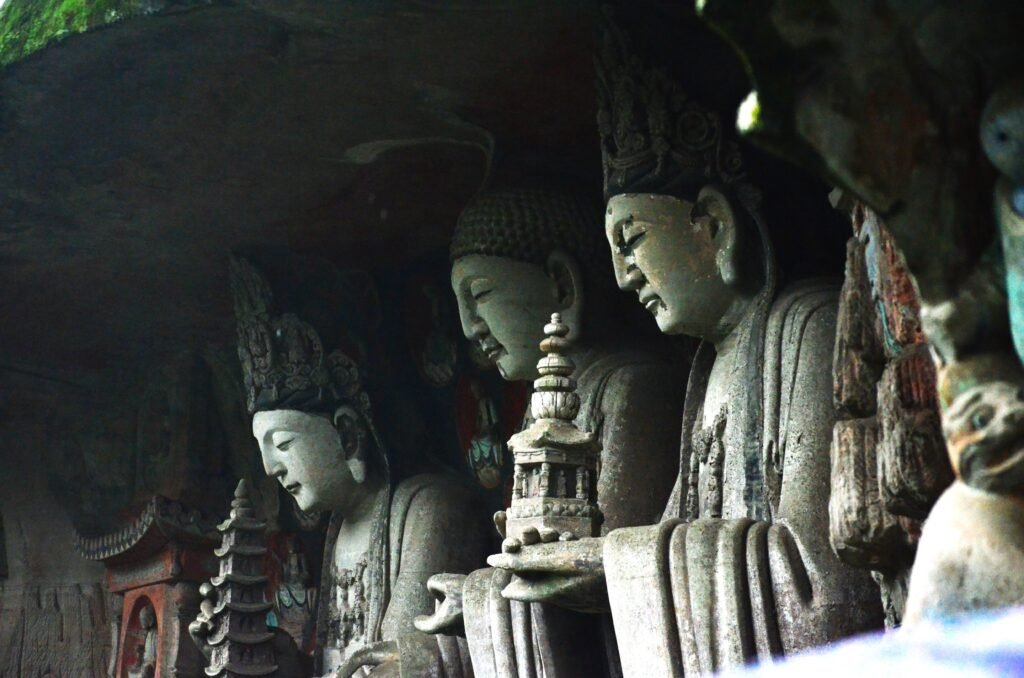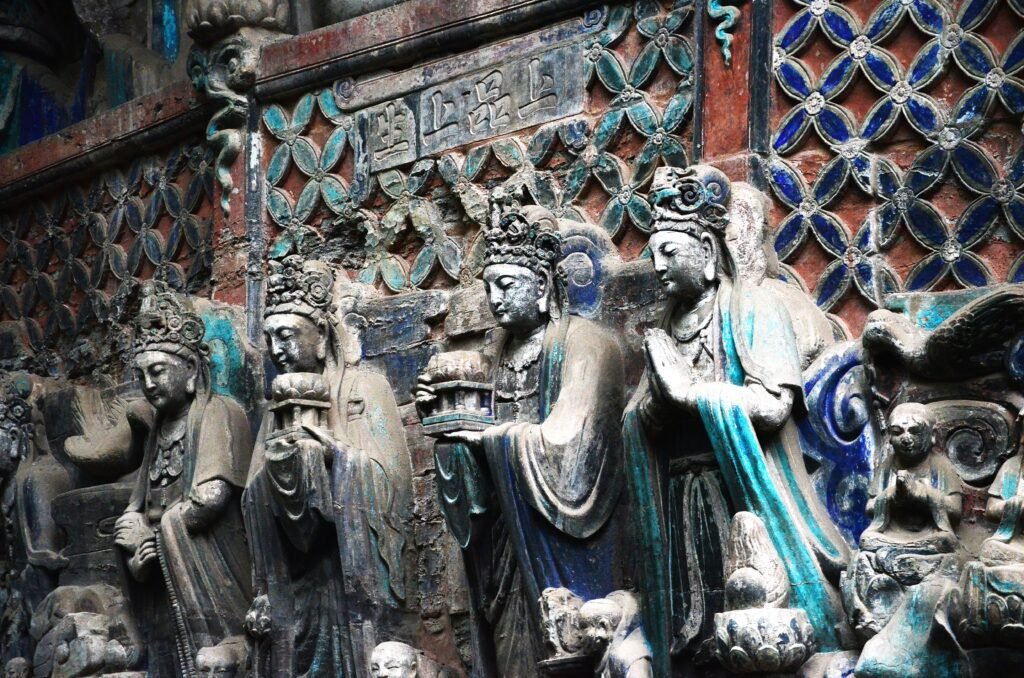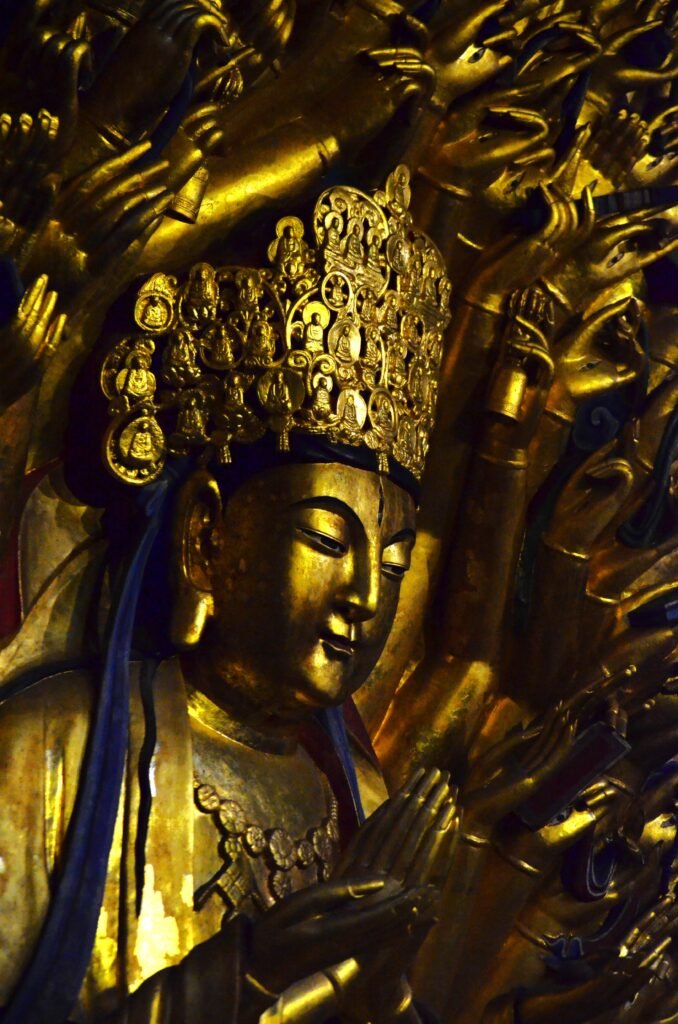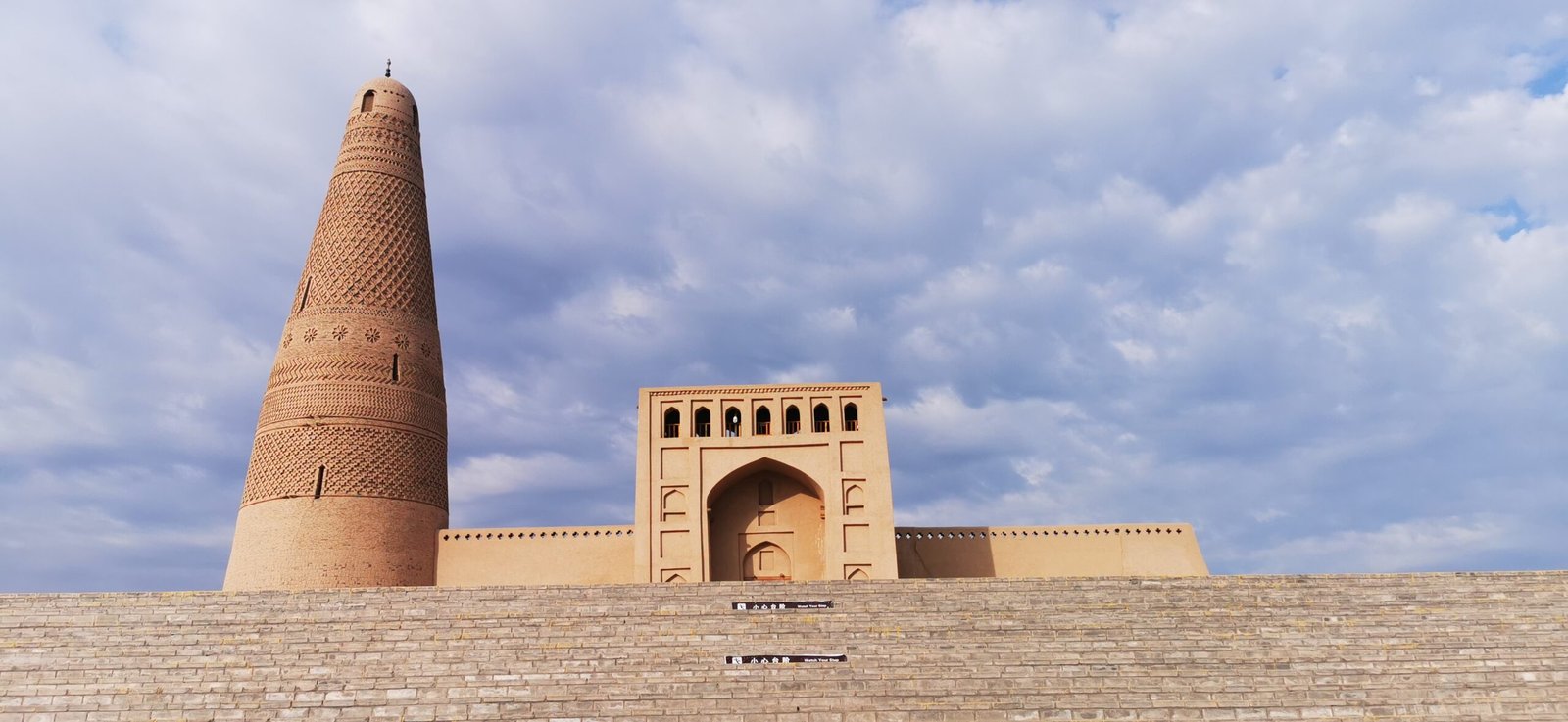Buddhist statues hold a significant place in China’s rich cultural and religious history, reflecting the profound influence of Buddhism since its introduction to the country. Among the numerous sites that showcase this heritage, the Dazu Rock Carvings in Dazu County stand out for their intricate artistry and historical importance.

Buddhist Statues in China
Routes Buddhism Spread Across China
Buddhism originated in India and made its way to China through various routes, primarily via the Silk Road and maritime paths. The Silk Road facilitated the movement of monks, traders, and scholars who carried Buddhist teachings into China’s interior regions. This overland route was instrumental in introducing Buddhism to the northwestern territories of China, where it gradually permeated the cultural fabric. Maritime routes also played a crucial role, with Buddhism reaching southern China along the Yangtze and Huai River regions. These sea routes enabled the spread of Buddhist practices and iconography, leading to the establishment of temples and the creation of statues in coastal areas.
Buddhist Statues Flourished in Ancient China
As Buddhism took root in China, the creation of Buddhist statues became a prominent expression of religious devotion and artistic endeavor. Artisans began crafting statues of Lord Siddhartha, known as Buddha, depicting various aspects of his life and teachings. These statues served both as objects of veneration and as educational tools, illustrating Buddhist principles to the faithful. Over time, regional styles emerged, blending traditional Chinese artistic elements with Buddhist iconography, resulting in a diverse array of sculptures that adorned temples, caves, and monasteries across the country.
Famous Buddhist Carvings in China
China is home to several renowned sites featuring Buddhist carvings, each reflecting the unique cultural and historical context of its creation. The Mogao Caves in Dunhuang, for instance, house a vast collection of murals and statues that span a millennium, showcasing the evolution of Buddhist art. Similarly, the Longmen Grottoes near Luoyang feature thousands of Buddha statues carved into limestone cliffs, representing the artistic achievements of the Northern Wei and Tang dynasties. These sites, among others, highlight the rich tapestry of Buddhist sculpture in China and its enduring legacy.
Dazu Buddhist Carvings
Among China’s remarkable Buddhist sculptures, the Dazu Rock Carvings in Chongqing’s Dazu County are particularly noteworthy. These carvings, dating from the 9th to the 13th centuries, represent the pinnacle of Chinese rock art and offer profound insights into the religious and social dynamics of their time.
The Latest Magnificence of Dazu Buddhist Carvings
The Dazu Rock Carvings are considered the latest significant addition to China’s collection of Buddhist sculptures. Unlike earlier sites, which often focused solely on religious themes, the Dazu carvings incorporate a blend of Buddhist, Confucian, and Taoist elements, reflecting a harmonious coexistence of these philosophies. The carvings are renowned for their realistic portrayals and intricate details, capturing various aspects of daily life, moral teachings, and religious narratives. This synthesis of artistic expression and spiritual guidance marks the Dazu carvings as a unique cultural treasure.

The Largest Sleeping Buddha Sculpture in China
One of the most striking features of the Dazu Rock Carvings is the colossal sleeping Buddha sculpture, which is the largest of its kind in China. This impressive statue measures approximately 31 meters in length and depicts Lord Siddhartha in a state of serene repose, symbolizing his entry into Nirvana. The sculpture’s exquisite craftsmanship and monumental scale make it a focal point of the site, drawing visitors and scholars alike to marvel at its beauty and significance.
The Golden Thousand-Hand Kwan-yin
Another masterpiece within the Dazu Rock Carvings is the Golden Thousand-Hand Kwan-yin, a stunning representation of the Bodhisattva of Compassion. This intricate sculpture features Kwan-yin with multiple arms, each hand holding a different symbolic object, illustrating the deity’s boundless ability to aid those in need. The meticulous detailing and the use of gold leaf impart a radiant quality to the statue, enhancing its spiritual and aesthetic appeal.

Conclusions
The Buddhist statues of China, exemplified by the Dazu Rock Carvings, offer a profound window into the nation’s artistic, religious, and cultural history. These sculptures not only serve as devotional objects but also as enduring symbols of the philosophical and aesthetic currents that have shaped Chinese civilization. The intricate depictions of Lord Siddhartha and other figures within these carvings continue to inspire admiration and scholarly interest, underscoring their timeless significance.

